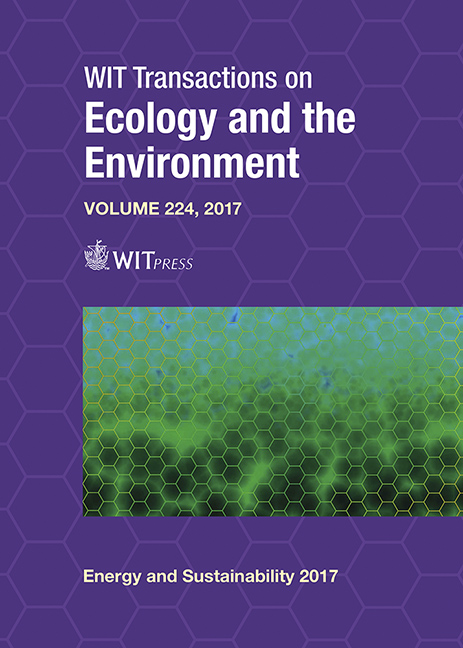AN EXPERIMENTAL STUDY OF THE PHOTOCATALYTIC HYDROGEN PRODUCTION IN THE LABORATORY-SCALE SET-UP DEPENDING ON THE PROCESS CONDITIONS
Price
Free (open access)
Transaction
Volume
224
Pages
10
Page Range
339 - 348
Published
2017
Paper DOI
10.2495/ESUS170321
Copyright
WIT Press
Author(s)
MAREK STELMACHOWSKI, KATARZYNA BEDNARCZYK, MARTA GMUREK
Abstract
Concern for the environment and the use of renewable energy sources are the two main priorities of energy policy combined with an environmental policy that is based on the principles of sustainable development. Many aspects should be taken into account in the case of energy production based on biomass/biofuels, in particular, the possibility of the formation of additional by-products. Glycerol is the main by-product during the trans-esterification of vegetable oils to biodiesel. The photocatalytic hydrogen production from the glycerol-water solution is less energy consuming reaction in comparison (for example) with its steam reforming or bio-conversion because it can be processed under mild conditions and low temperature. The paper presents the experimental results of the application process of photocatalytic hydrogen production from an aqueous solution of glycerol, with the use of TiO2 doped with noble metals (platinum, palladium, silver) as a photocatalyst under solar-like light irradiation. The aim was to compare the hydrogen productivity depending on the catalyst concentration, the kind of the doped metal and the amount of the metal in the catalyst. The reaction (glycerol-water with suspended catalyst) mixture was irradiated by Xe-arc lamps (100 W). The influence of the doped metal on the hydrogen yield was studied for the photocatalysts prepared by the sol-gel and photodeposition method. The photocatalysts have been studied using scanning electron microscopy (SEM) with EDX (Quanta FEI 200F, Oxford Instruments X-Max50), X-ray powder diffraction analysis (XRD) and X-ray photoelectron spectroscopy (XPS). It was proved, that glycerol is a good and efficient substance for the photocatalytic hydrogen production. The prepared and studied photocatalysts are characterized by high stability and very high yield under used process conditions. The experiments were performed in the quartz reactor with volume 1200 cm3. The volume of the reaction solution containing aqueous glycerol solution was 600 cm3. The maximum hydrogen production was about 269.13·10-3 [mole H2/(h·gcat)] and it was observed for TiO2 doped by platinum (1% by weight; prepared by photodeposition) for 4.5% aqueous solution of glycerol.
Keywords
photocatalytic, conversion, photocatalyst, hydrogen, glycerol





